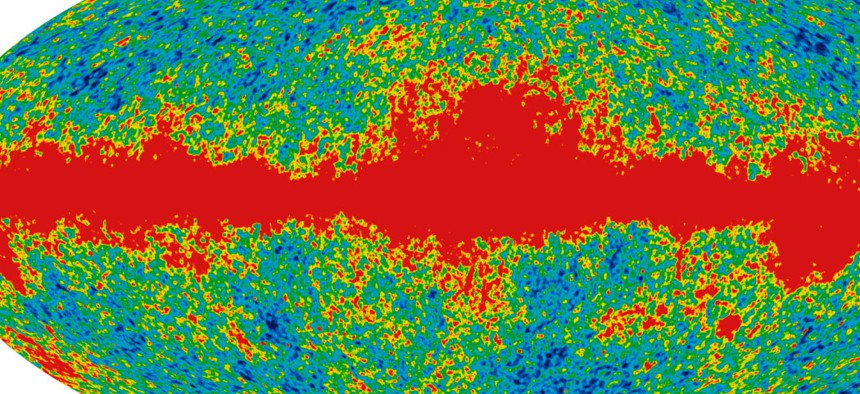'Radio whispering' promises a great leap in wireless communications
UC San Diego researchers working with DARPA show how to make a low-power, lightweight system that can take advantage of unused frequencies and avoid interference.
With the airwaves already crowded with wireless signals and that traffic expected to grow exponentially in the coming years, the challenge facing military and civilian researchers is how to make the most efficient use of the electromagnetic spectrum.
The Defense Department’s Electromagnetic Spectrum Strategy outlines goals for accommodating the ever growing number of military devices—from UAVs to embedded sensors and smart devices of all kinds.
HERMES, which stands for Hyper-wideband Enabled RF Messaging, was started in 2014 to find way to solve jamming and signal fratricide problems with wideband spread-spectrum communications that provide more than 10 GHz of instantaneous bandwidth and operate below 20 GHz to employ coding gain and spectral filtering, as well as reduce atmospheric absorption. It’s an effort to answer the question of how to keep the signals from all of these devices from interfering with each other.
A team of researchers at the University of California, San Diego, working with the Defense Advanced Research Projects Agency’s HERMES program, say they may have found one answer: the equivalent of “radio whispers” that require almost no power but can tap into unused frequencies in the spectrum to get signals to their destinations while resisting any interference.
The researchers published a paper in IEEE’s Journal of Lightwave Technology outlining how the technology could maximize use of the spectrum while providing jam-resistant communications.
“This paper shows that there is a way to get there,” DARPA program manager Josh Conway said in a DARPA release. “This advance in HERMES means we might have a new way to tap into all of this spectrum and in a way in which you won’t jam anyone else and they won’t be able to jam you.”
The technology could take advantage of both unlicensed Wi-Fi bands but also large sections of licensed frequencies.
UCSD Professor Stojan Radic explained in the paper how he and four colleagues used what they called “optical combs” inside a hair-thin optical fiber that is still able to produce a supercomputer’s worth of signal processing, putting hundreds of frequencies into a single fiber. “Our system can reconstruct the signal at almost no energy expenditure,” Radic said. Narrow-band filtering and other features enable signals to be received even in the face of jamming signals 100,000 times stronger.
Radic said the team is now working to increase the spectral spreading capacity and reducing the size of the receiver to that of a processing chip, resulting in a small, lightweight system that could easily fit into any number of UAVs.
DARPA also is researching other ways of making better use of the spectrum, such as spectrum sharing, under its SSPARC program and its Spectrum Collaboration Challenge, a competition with a $2 million grand prize that gets going in 2017.




